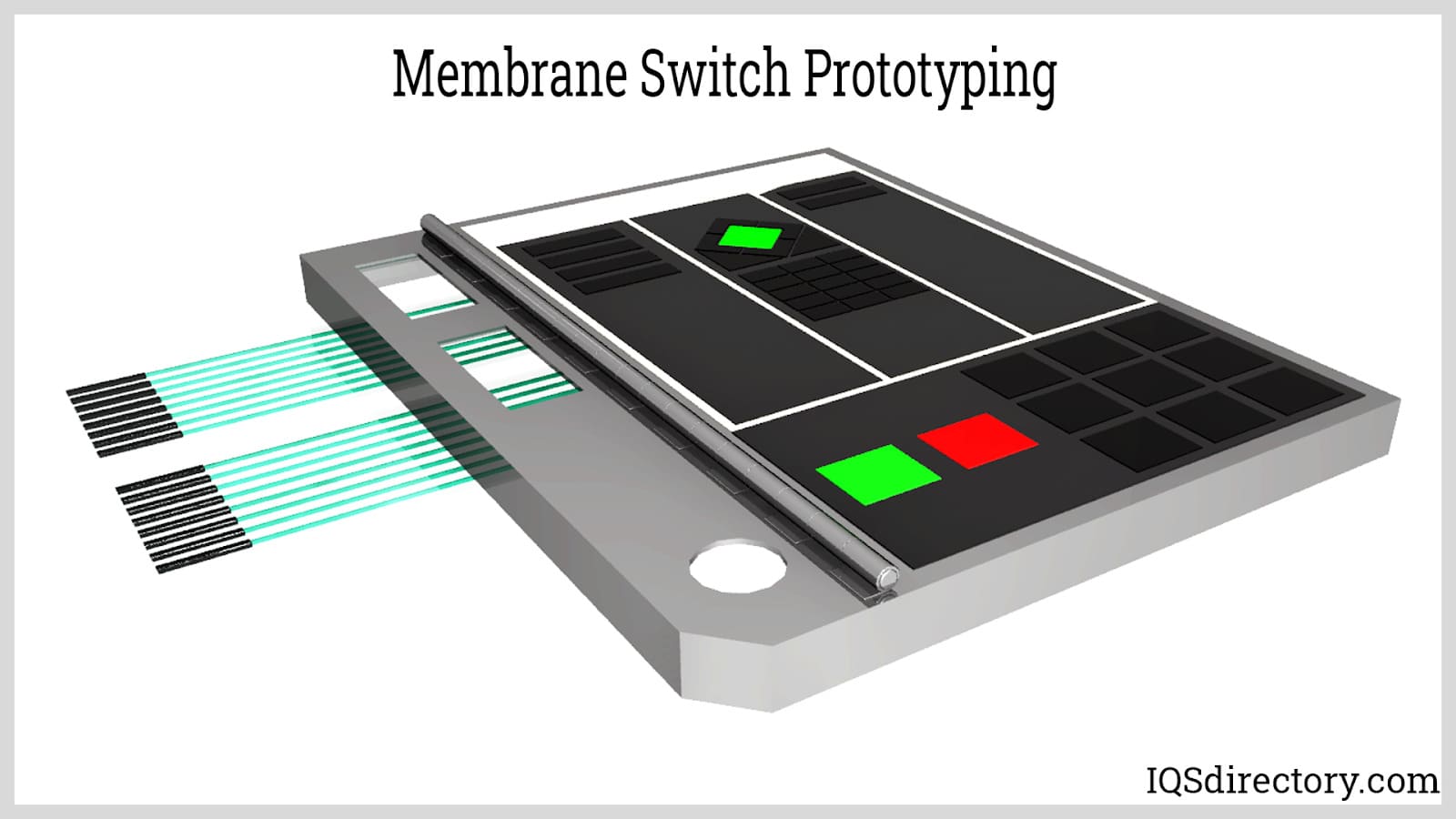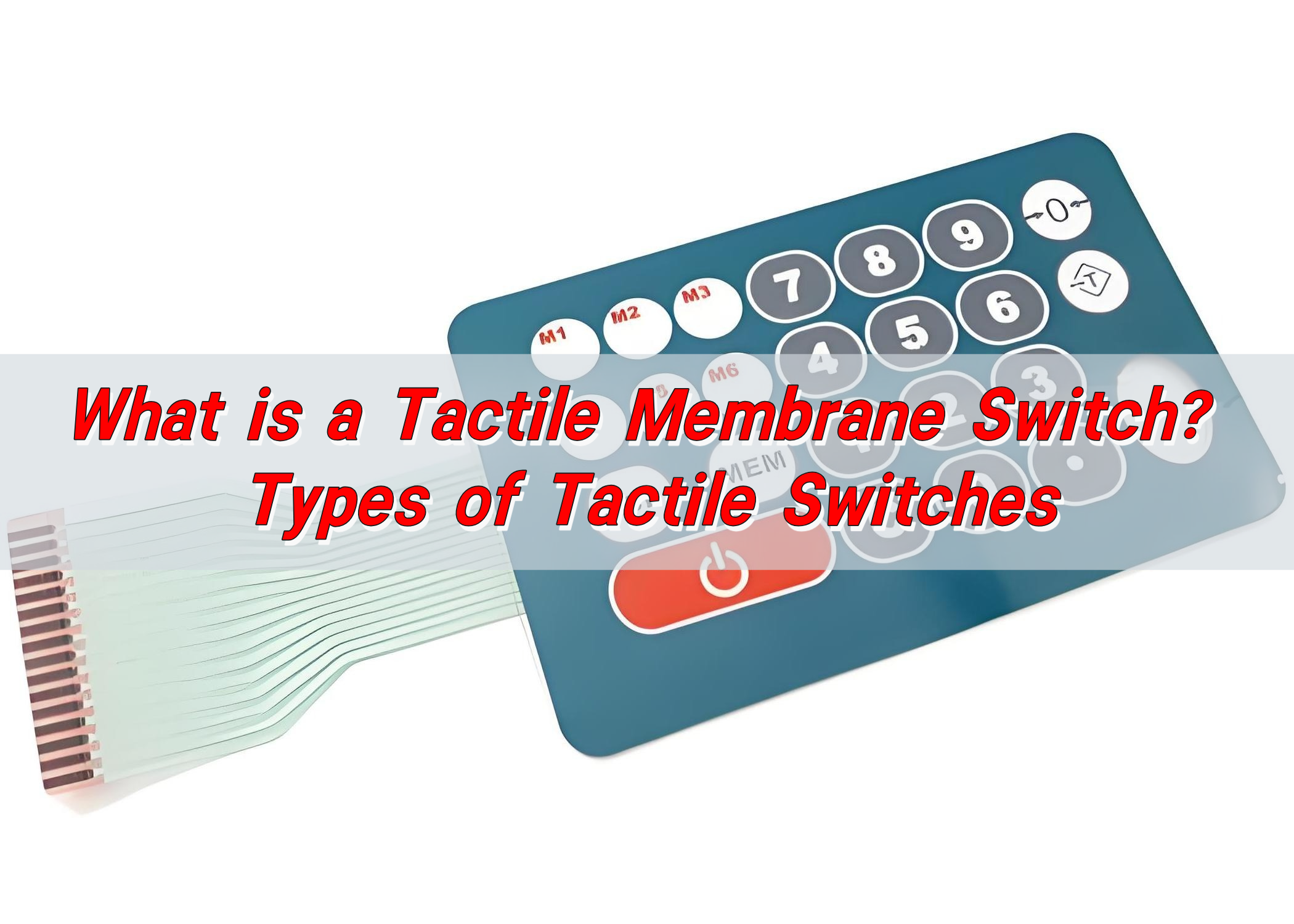All Concerning Membrane Switch Over: A Comprehensive Overview for Beginners
Membrane buttons are necessary parts in modern electronic devices, offering an unique user interface for customer interaction - membrane switch. Their split construction, including overlays and conductive traces, supplies capability and resilience. Unlike standard mechanical switches, membrane switches offer a sleek layout and adjustable options. Understanding their crucial attributes and advantages can transform item style. However, the ins and outs of their application and design considerations require further expedition
What Is a Membrane Switch over?
A membrane button is a sort of electric switch that is composed of an adaptable membrane layer layered over a published circuit card. This design enables a sleek and portable user interface, commonly utilized in different digital tools. Membrane layer switches are frequently discovered in consumer appliances, medical tools, and industrial machinery due to their sturdiness and resistance to environmental factors.The construction normally consists of numerous layers, such as visuals overlays and glue support, which give responsive feedback and secure the wiring below. The operation of a membrane button is started when stress is related to the surface, finishing an electrical circuit.These buttons are valued for their adaptability, making it possible for custom-made layouts and printed graphics that accommodate specific interface. Their inconspicuous nature minimizes room requirements, making them excellent for applications where standard buttons may not fit. On the whole, membrane layer switches use a practical and aesthetic remedy for contemporary electronic tools.
Secret Components of Membrane Layer Switches
Membrane changes make up numerous vital parts that add to their functionality and performance. The top layer, referred to as the overlay, provides the interface and is commonly published with graphics or signs. Beneath the overlay exists a spacer layer, which divides the conductive elements and avoids inadvertent activation. The next vital part is the visuals layer, which enhances looks and ensures the sturdiness of the design.Conductive traces, generally made from materials like silver or carbon, are published on the circuit layer. When pressure is related to the overlay, these traces come right into get in touch with, completing the circuit. In addition, a backing layer uses architectural assistance and can be made from products such as polyester or polycarbonate. Together, these components create a reputable, straightforward user interface appropriate for numerous applications, from family devices to industrial devices. Understanding these components is vital for anyone thinking about membrane layer switch technology.
Exactly How Membrane Layer Switches Over Job
Comprehending just how membrane layer switches function is vital for appreciating their extensive use in different tools. A membrane layer switch operates with a series of layers, including a visuals overlay, spacer, and a circuit layer. When pressure is related to the overlay, it presses the spacer layer, enabling the circuit layer to make contact and complete an electrical circuit. This action sends out a signal to the gadget, triggering a feedback, such as transforming on a light or triggering a function.Membrane switches can be created with numerous functions, including responsive feedback, backlighting, and customized graphics, improving user communication. Their construction enables a sealed style, safeguarding the interior elements from dust, dampness, and contaminants. This longevity makes them suitable for varied applications, from consumer electronics to industrial equipment. Generally, the simplicity and efficiency of membrane layer switches add to their appeal in modern innovation.
Benefits of Membrane Switches Over Mechanical Buttons
While mechanical switches have actually long been a staple in many devices, membrane layer switches deal unique benefits that make them significantly appealing. One considerable advantage is their slim account, enabling even more portable designs and better adaptability in product development. In addition, membrane layer switches attribute an uniform surface area, which boosts visual appeal and streamlines cleansing, making them appropriate for environments where hygiene is critical.Another benefit is their resistance to dirt and moisture. Unlike mechanical buttons, which can be compromised by ecological factors, membrane switches offer a sealed interface that protects against pollutants - membrane switch. Furthermore, membrane switches normally have a longer life expectancy as a result of fewer moving parts, leading to boosted longevity and reliability.Cost-effectiveness is likewise a notable benefit, as membrane buttons can be created wholesale with lower production prices. These aspects combine to place membrane layer switches as a practical alternative to traditional mechanical choices in different applications
Common Applications of Membrane Layer Switches Over
Membrane switches are widely made use of in numerous industries, specifically in consumer electronic devices and commercial control panels. In consumer devices, they provide a smooth, straightforward interface, while in industrial settings, they boost resilience and performance. Recognizing these applications highlights the versatility and practicality of membrane layer buttons in modern-day innovation.
Customer Electronic Devices Devices
As consumer electronics continue to develop, membrane layer buttons have become a prominent choice for a range of tools as a result of their convenience and sleek layout. These buttons are generally located in smartphones, tablet computers, and remote controls, where space is limited and looks issue. Their low profile and adjustable styles enable producers to develop user-friendly user interfaces that boost the total customer experience. Furthermore, membrane switches are often used in devices such as microwaves and coffee manufacturers, supplying user-friendly control options while resisting wetness and dust. The longevity and integrity of membrane layer switches make them ideal for day-to-day customer items, guaranteeing longevity and consistent performance. In general, their integration in customer electronics mirrors a mix of performance and modern layout.
Industrial Control Panels
The applications of membrane switches over extend past consumer electronic devices, discovering significant usage in commercial control panels. These buttons are preferred for their longevity and resistance to extreme atmospheres, making them ideal for making and procedure control settings. They provide a trusted interface for drivers their explanation to regulate equipment, monitor procedures, and adjust settings. Membrane layer switches can be customized to fit specific functional requirements, incorporating attributes like backlighting and tactile comments, boosting user experience. Their inconspicuous style permits combination into various tools, while their ability to stand up to spills, dust, and extreme temperature levels guarantees durability. On the whole, membrane buttons add to safe and effective operation in commercial applications, showing their convenience and efficiency sought after atmospheres.
Factors To Consider for Designing Membrane Switches
When creating membrane layer switches, selecting the best products is important to assure sturdiness and performance. In addition, understanding layer arrangement methods can substantially influence the switch's performance and user experience. These factors to consider play a crucial function in producing effective and trusted membrane layer button layouts.
Material Selection Significance
Material selection plays a necessary role in the style and capability of membrane layer buttons. The selected products straight influence the button's toughness, responsive response, and overall visual. Key factors to consider consist of the substratum, which need to supply structural integrity while permitting for flexibility, and the visuals overlay, which requires to be resistant to wear and ecological aspects. Conductive materials need to assure reputable electrical performance, while adhesives have to use strong bonding without endangering the button's operation. Additionally, compatibility with making procedures and end-user settings is visit this site right here important; materials have to stand up to differing temperatures, moisture levels, and chemical exposure. Eventually, suitable material option not only boosts the membrane button's performance yet likewise contributes to its durability and user complete satisfaction, making it a critical facet of the design procedure.

Layer Arrangement Techniques

Often Asked Questions
How Much Time Do Membrane Switches Over Generally Last?
Membrane layer switches typically have a life expectancy of 1 to 5 million cycles, depending on usage and ecological conditions. Elements such as layout high quality and operating regularity significantly affect their resilience and total efficiency long life.

Can Membrane Layer Switches Be Personalized for Certain Styles?
Membrane buttons can undoubtedly be customized to suit details styles, permitting diverse forms, shades, and capabilities. This adaptability allows manufacturers to customize these buttons to fulfill special aesthetic and functional demands effectively.
What Materials Are Used in Membrane Layer Change Construction?
Membrane layer buttons are generally created using products such as polyester, polycarbonate, and glue layers. These products offer longevity, resistance, and flexibility to ecological variables, guaranteeing the buttons function efficiently in numerous applications and conditions.
Are Membrane Changes Water-proof or Immune to Moisture?
Membrane buttons can be made to be moisture-resistant, making use of specialized materials and coverings. Nevertheless, their water-proof capacities rely on building and construction quality and particular applications, making it vital to analyze demands for perfect performance in different atmospheres.
Just How Are Membrane Switches Over Repaired if Damaged?
Fixing broken membrane layer changes normally entails changing the influenced layer or circuit. Professionals might likewise apply conductive glue or use specialized fixing kits, ensuring performance is restored without complete substitute of the whole button setting up. Unlike conventional mechanical buttons, membrane switches offer a streamlined style and adjustable options. A membrane layer switch is a type of electrical button that is composed of a flexible membrane layer layered over a published circuit board. The procedure of a membrane layer button is started when pressure is applied to the surface area, completing an electrical circuit.These buttons are valued for their flexibility, making it possible for customized styles and printed graphics that provide to specific customer interfaces. While mechanical switches have long been a staple in lots of devices, membrane layer switches deal distinctive benefits that make them increasingly appealing. Membrane layer switches commonly have a longer life expectancy due to less relocating parts, resulting in boosted sturdiness and reliability.Cost-effectiveness is also a significant advantage, as membrane layer switches can be created in mass with lower production costs.